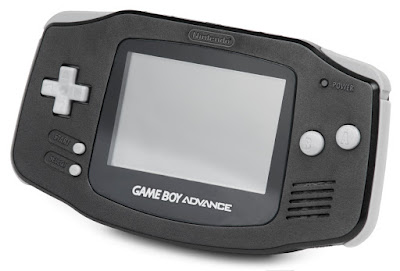Introduced March 2001
Nintendo had popularised handheld gaming, first with the simple but fun Game & Watch in 1980, then then Game Boy in 1990 and the Game Boy Color in 1998. By the early noughties, the technology for handheld devices was improving at a rapid rate – and it was into this market that the Game Boy Advance (or “GBA” for short) was born.
The original series of Game Boy devices used a weird Sharp CPU – the LR35902, which was a sort of cross between an Intel 8080 and a Zilog Z80. The new Game Boy Advance used a 32-bit ARM processor of the type that was eventually to become ubiquitous in handheld devices. The weird Sharp CPU was still there though, providing backwards compatibility with earlier Game Boy generations.
 |
| Game Boy Advance |
Unlike earlier versions, the control buttons were on either side of the 2.9” colour display. But it was the display itself that was divisive – it didn’t have a backlight and was difficult to see in a lot of lighting conditions. Although 2001-era displays weren’t as good as they are today, the Game Boy Advance was a disappointment. However, power requirements were low and the unit would run for up to 15 hours on two AA batteries.
Limitations aside, it was a very successful device with a wide variety of games, including all those written for earlier Game Boy devices plus a large number of others written just for this console. The GBA also came in a wide variety of colours and special editions to tempt people to buy more than one. Less commonly used were adapters and link cables for playing multiplayer games and watching videos.
 |
| Game Boy Advance SP |
Although it was a fundamentally good console, the poor screen held it back. In 2003 Nintendo launched the Game Boy Advance SP in a clamshell design with a front-light which improved matters, but a later revision in 2005 (the AGS-101) included a backlight and it finally made the GBA playable in all environments. The Nintendo DS effectively replaced the GBA and was compatible with most of its games, originally launched alongside the SP it eventually took over. Between all different models of the GBA, total sales were in excess of 80 million. If you want one today, prices vary significantly but an AGS-101 in good condition will start at around £150 but rarer variants can be much more expensive.
Image credits:
Evan-Amos via Wikimedia Commons – CC BY-SA 3.0
Evan-Amos via Wikimedia Commons – CC 0

No comments:
Post a Comment